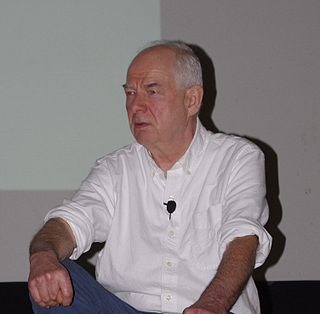
No Logo: Taking Aim at the Brand Bullies is a book by the Canadian author Naomi Klein. First published by Knopf Canada and Picador in December 1999, shortly after the 1999 Seattle WTO protests had generated media attention around such issues, it became one of the most influential books about the alter-globalization movement and an international bestseller.

The Situationist International (SI) was an international organization of social revolutionaries made up of avant-garde artists, intellectuals, and political theorists. It was prominent in Europe from its formation in 1957 to its dissolution in 1972. The intellectual foundations of the Situationist International were derived primarily from libertarian Marxism and the avant-garde art movements of the early 20th century, particularly Dada and Surrealism. Overall, situationist theory represented an attempt to synthesize this diverse field of theoretical disciplines into a modern and comprehensive critique of mid-20th century advanced capitalism.
Guerrilla communication and communication guerrilla refer to an attempt to provoke subversive effects through interventions in the process of communication. It can be distinguished from other classes of political action because it is not based on the critique of the dominant discourses but in the interpretation of the signs in a different way. Its main goal is to make a critical non-questioning of the existing, for reasons ranging from political activism to marketing. In terms of marketing, journalist Warren Berger explains unconventional guerrilla-style advertising as "something that lurks all around, hits us where we live, and invariably takes us by surprise". These premises apply to the entire spectrum of guerrilla communication because each tactic intends to disrupt cognitive schemas and thought processing.

Internet activism, hacktivism, or hactivism, is the use of computer-based techniques such as hacking as a form of civil disobedience to promote a political agenda or social change. With roots in hacker culture and hacker ethics, its ends are often related to free speech, human rights, or freedom of information movements.

A détournement, meaning "rerouting, hijacking" in French, is a technique developed in the 1950s by the Letterist International, and later adapted by the Situationist International (SI), that was defined in the SI's inaugural 1958 journal as "[t]he integration of present or past artistic productions into a superior construction of a milieu. In this sense there can be no situationist painting or music, but only a situationist use of those means. In a more elementary sense, détournement within the old cultural spheres is a method of propaganda, a method which reveals the wearing out and loss of importance of those spheres."

Subvertising is the practice of making spoofs or parodies of corporate and political advertisements. The cultural critic Mark Dery coined the term in 1991. Subvertisements are anti-ads that deflect advertising's attempts to turn the people's attention in a given direction. According to author Naomi Klein, subvertising offers a way of speaking back to advertising, ‘forcing a dialogue where before there was only a declaration.’ They may take the form of a new image or an alteration to an existing image or icon, often in a satirical manner.

The Adbusters Media Foundation is a Canadian-based not-for-profit, pro-environment organization founded in 1989 by Kalle Lasn and Bill Schmalz in Vancouver, British Columbia. Adbusters describes itself as "a global network of artists, activists, writers, pranksters, students, educators and entrepreneurs who want to advance the new social activist movement of the information age."
The First Things First 2000 manifesto, launched by Adbusters magazine in 1999, was an updated version of the earlier First Things First manifesto written and published in 1964 by Ken Garland, a British designer.
Alternative media are media sources that differ from established or dominant types of media in terms of their content, production, or distribution. Sometimes the term independent media is used as a synonym, indicating independence from large media corporations, but generally independent media is used to describe a different meaning around freedom of the press and independence from government control. Alternative media does not refer to a specific format and may be inclusive of print, audio, film/video, online/digital and street art, among others. Some examples include the counter-culture zines of the 1960s, ethnic and indigenous media such as the First People's television network in Canada, and more recently online open publishing journalism sites such as Indymedia.

Kalle Lasn is an Estonian-Canadian film maker, author, magazine editor, and activist. Near the end of World War II, his family fled Estonia and Lasn spent some time in a German refugee camp. At age seven he was resettled in Australia with his family, where he grew up and remained until the late 1960s, attending school in Canberra. In the late 1960s, he founded a market research company in Tokyo, and in 1970, moved to Vancouver, British Columbia, Canada. Over the course of twenty years, he produced documentaries for PBS and Canada’s National Film Board. He currently resides in Vancouver, British Columbia.
A meme hack is changing a meme to express a point of view not intended or inherent in the original image, or even opposite to the original. The meme can be thoughts, concepts, ideas, theories, opinions, beliefs, practices, habits, songs, or icons. Distortions of corporate logos are also referred to as subvertising. Another definition is: "Intentionally altering a concept or phrase, or using it in a different context, so as to subvert the meaning."

Anti-consumerism is a sociopolitical ideology that is opposed to consumerism, the continual buying and consuming of material possessions. Anti-consumerism is concerned with the private actions of business corporations in pursuit of financial and economic goals at the expense of the public welfare, especially in matters of environmental protection, social stratification, and ethics in the governing of a society. In politics, anti-consumerism overlaps with environmental activism, anti-globalization, and animal-rights activism; moreover, a conceptual variation of anti-consumerism is post-consumerism, living in a material way that transcends consumerism.

Mark Dery is an American writer, lecturer and cultural critic. An early observer and critic of online culture, he helped to popularize the term "culture jamming" and is generally credited with having coined the term "Afrofuturism" in his essay "Black to the Future" in the anthology Flame Wars: The Discourse of Cyberculture. He writes about media and visual culture, especially fringe elements of culture for a wide variety of publications, from Rolling Stone to BoingBoing.

The spectacle is a central notion in the Situationist theory, developed by Guy Debord in his 1967 book The Society of the Spectacle. In the general sense, the spectacle refers to "the autocratic reign of the market economy which had acceded to an irresponsible sovereignty, and the totality of new techniques of government which accompanied this reign." It also exists in a more limited sense, where spectacle means the mass media, which are "its most glaring superficial manifestation."

Jonah H. Peretti is an Internet entrepreneur, a co-founder and the CEO of BuzzFeed, co-founder of The Huffington Post, and developer of reblogging under the project "Reblog".

Situationist prank is a term used in the mass media to label a distinctive tactic by the Situationist International, consisting of setting up a subversive political prank, hoax or stunt; In the terminology of the Situationist International, stunts and media pranks are very similar to situations. The détournement technique, that is "turning expressions of the capitalist system against itself," was the essential element of a situationist prank. The Situationist tactic of using détournement for subversive pranks is such a distinctive and influential aspect of the Situationist International, that they are sometimes labeled as a group of political pranksters.
Nike, Inc. has been accused of using sweatshops and worker abuse to produce footwear and apparel in East Asia. After rising prices and the increasing cost of labor in Korean and Taiwanese factories, Nike began contracting in countries elsewhere in Asia, which includes parts of India, Pakistan, and Indonesia. It sub-contracted factories without reviewing the conditions, based on the lowest bid. Nike's usage of sweatshops originates to the 1970's. However, it wasn't until 1991, when a report by Jeff Ballinger was published detailing their insufficient payment of workers and the poor conditions in their Indonesian factories, that these sweatshops came under the media and human rights scrutiny that continues to today.

Radical media are communication outlets that disperse action-oriented political agendas utilizing existing communication infrastructures and its supportive users. These types of media are differentiated from conventional mass communications through its progressive content, reformist culture, and democratic process of production and distribution. Advocates support its alternative and oppositional view of mass media, arguing that conventional outlets are politically biased through their production and distribution. However, there are some critics that exist in terms of validating the authenticity of the content, its political ideology, long-term perishability, and the social actions led by the media.
Brandalism is an activist artist collective founded in 2012 in the United Kingdom which engages in subvertising, culture jamming, and protest art. Brandalism uses subvertising to alter and critique corporate advertising by creating parodies or spoofs to replace ads in public areas. The art is typically intended to draw attention to political and social issues such as consumerism and the environment. Advertisements produced by the Brandalism movement are silk screen printed artworks, and may take the form of a new image, or a satirical alteration to an existing image, icon or logo. The advertisements are often pasted over billboards, or propped under the glass of roadside advertising spaces.
Billboard hacking or billboard hijacking is the practice of altering a billboard without the consent of the owner. It may involve physically pasting new media over the existing image, or hacking into the system used to control electronic billboard displays. The aim is to replace the programmed video with a different video or image. The replaced media may be displayed for various reasons, including culture jamming, shock value, promotion, activism, political propaganda, or simply to amuse viewers.














